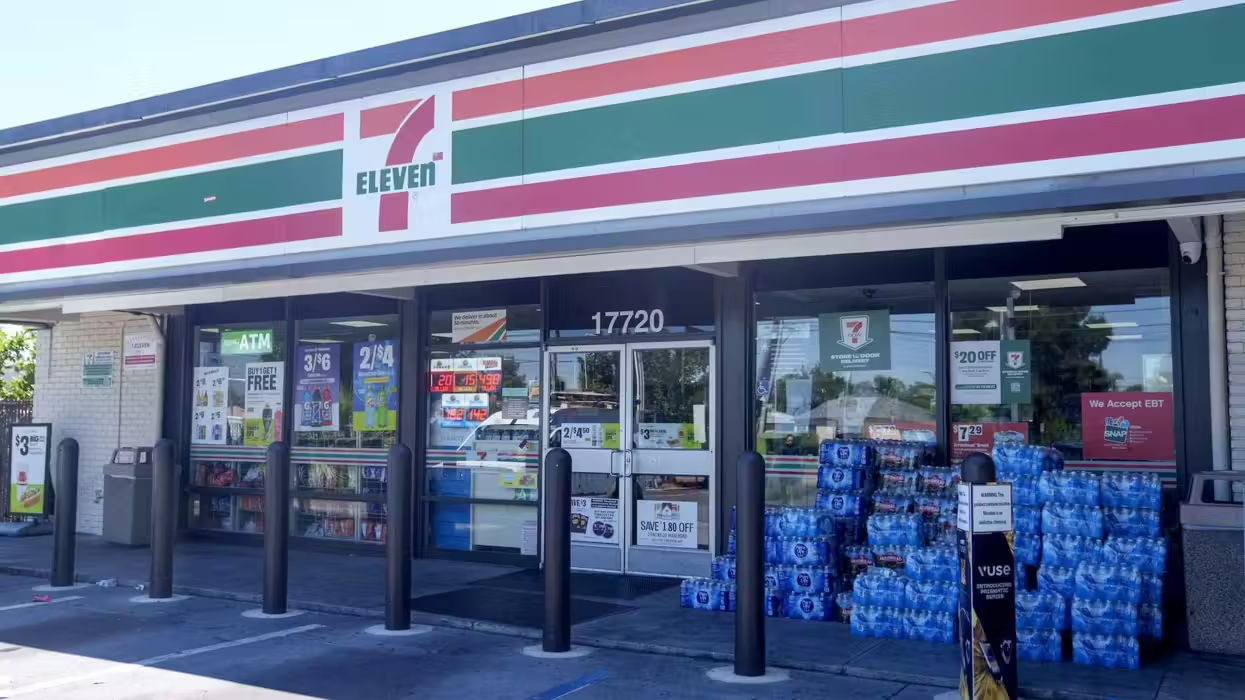
© 2025 Blaze Media LLC. All rights reserved.
City Planner Says This Simple Change to Road Widths Could Reduce Traffic Deaths
October 07, 2014
"Relatively inexpensive win-win-win that DOT could fund tomorrow."
Jeff Speck, a city planner based in Washington, D.C., thinks there's fix that could make the roads safer that doesn't involve new technologies like self-driving cars or systems that beep when your car gets to close to another car. In fact, the fix is as old as the road itself.
 Photo credit: Shutterstock
Photo credit: Shutterstock
According to Speck, just making road lanes narrower could reduce vehicular deaths.
"[...] they believe that wider lanes are safer," Speck wrote for the Atlantic's Citylab of county and state officials who have set lane sizes at 12 feet wide. "And in this belief, they are dead wrong. Or, to be more accurate, they are wrong, and thousands of Americans are dead.
"They are wrong because of a fundamental error that underlies the practice of traffic engineering — and many other disciplines — an outright refusal to acknowledge that human behavior is impacted by its environment. This error applies to traffic planning, as state [transportation departments] widen highways to reduce congestion, in compete ignorance of all the data proving that new lanes will be clogged by the new drivers that they invite. And it applies to safety planning, as traffic engineers, designing for the drunk who's texting at midnight, widen our city streets so that the things that drivers might hit are further away," Speck continued.
According to the Federal Highway Administration, most rural and urban roads are allowed to have lanes up to 12 feet wide. Minimum lane width can get down to as low as nine feet depending on the type of road. But Speck thinks 10 feet lane widths would be ideal — and he's not the only one to reach this conclusion.
First, Speck explained why decision makers should not necessarily design all roads to the maximum width recommended by the FHA. He wrote that while engineers design highways to accommodate speeds much higher than the posted limit, they often do the same thing when designing city streets too. But on city streets, Speck wrote, drivers don't necessarily drive above the speed limit, but at a speed that they feel is safe.
"That speed is set by the cues provided by the environment. Are there other cars near me? Is an intersection approaching? Can I see around that corner? Are there trees and buildings near the road? Are there people walking or biking nearby? And: How wide is my lane?" Speck wrote.
If lanes are wider, Speck wrote that "many bad things happen," and he went on to detail his reasons why, including citing several studies that would support his position. Some studies supported that wider lanes resulted in cars traveling at greater speeds, which becomes an issue when pedestrians are involved.
"According to a broad collection of studies, a pedestrian hit by a car traveling 30 m.p.h. at the time of impact is between seven and nine times as likely to be killed as one hit by a car traveling 20 m.p.h. This tremendously sharp upward fatality curve means that, at urban motoring speeds, every single mile per hour counts," Speck wrote.
In his analysis of several studies and other data, Speck concluded that "10-foot lanes cause no more accidents than 12-foot lanes, and they may cause fewer. These accidents can be expected to be slower, and thus less deadly. Therefore, 10-foot lanes are safer than 12-foot lanes."
Reducing lane sizes, Speck wrote, would not only increase safety and provide more room for bicycle lanes, but he also said it is a "relatively inexpensive win-win-win that DOT could fund tomorrow."
Read Speck's full post on Citylab for more about how he thinks communities could benefit from smaller road lanes.
(H/T: Gizmodo)
Want to leave a tip?
We answer to you. Help keep our content free of advertisers and big tech censorship by leaving a tip today.
Want to join the conversation?
Already a subscriber?
more stories
Sign up for the Blaze newsletter
By signing up, you agree to our Privacy Policy and Terms of Use, and agree to receive content that may sometimes include advertisements. You may opt out at any time.
Related Content
© 2025 Blaze Media LLC. All rights reserved.
Get the stories that matter most delivered directly to your inbox.
By signing up, you agree to our Privacy Policy and Terms of Use, and agree to receive content that may sometimes include advertisements. You may opt out at any time.






